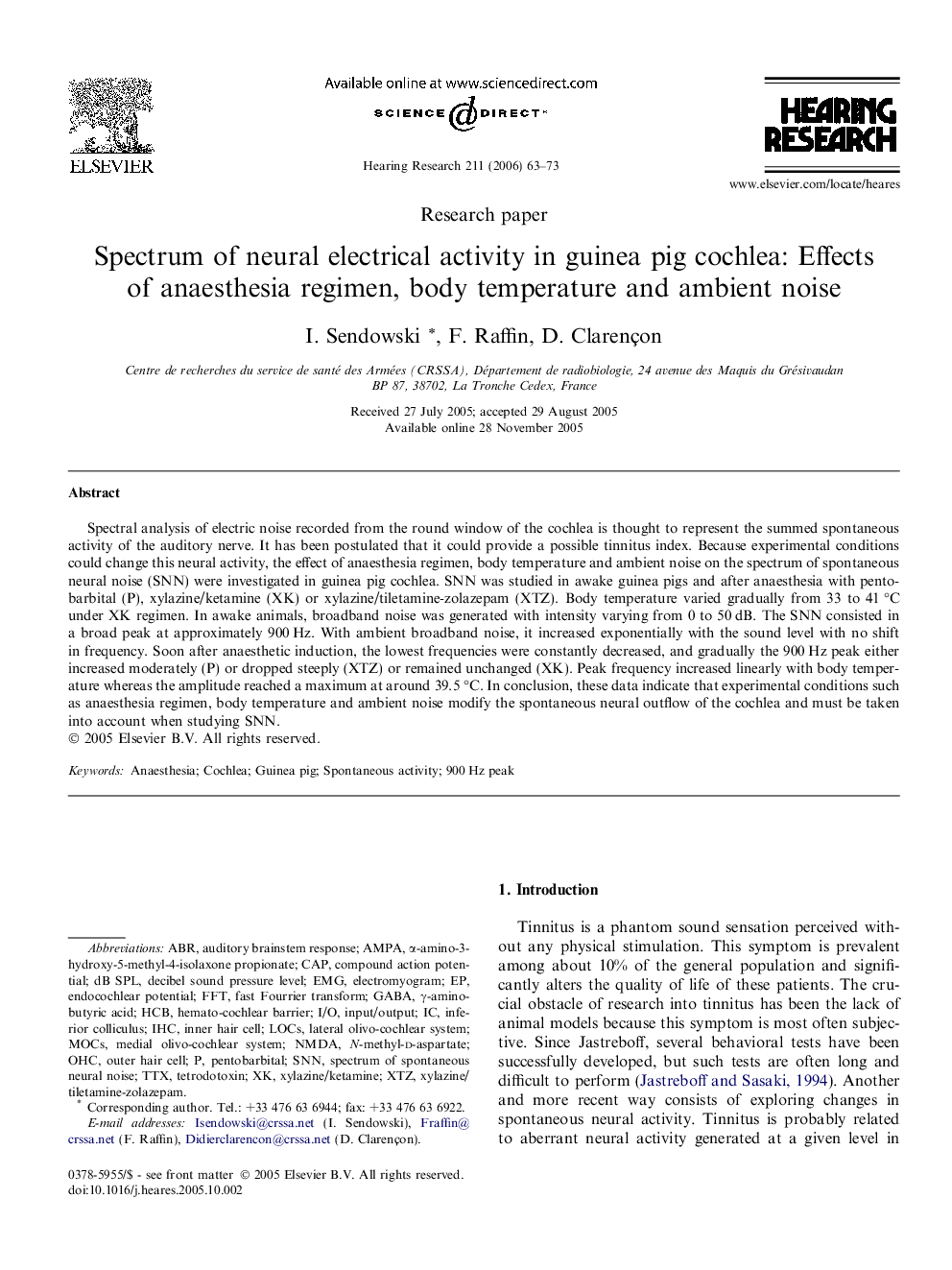| Article ID | Journal | Published Year | Pages | File Type |
|---|---|---|---|---|
| 4356559 | Hearing Research | 2006 | 11 Pages |
Spectral analysis of electric noise recorded from the round window of the cochlea is thought to represent the summed spontaneous activity of the auditory nerve. It has been postulated that it could provide a possible tinnitus index. Because experimental conditions could change this neural activity, the effect of anaesthesia regimen, body temperature and ambient noise on the spectrum of spontaneous neural noise (SNN) were investigated in guinea pig cochlea. SNN was studied in awake guinea pigs and after anaesthesia with pentobarbital (P), xylazine/ketamine (XK) or xylazine/tiletamine-zolazepam (XTZ). Body temperature varied gradually from 33 to 41 °C under XK regimen. In awake animals, broadband noise was generated with intensity varying from 0 to 50 dB. The SNN consisted in a broad peak at approximately 900 Hz. With ambient broadband noise, it increased exponentially with the sound level with no shift in frequency. Soon after anaesthetic induction, the lowest frequencies were constantly decreased, and gradually the 900 Hz peak either increased moderately (P) or dropped steeply (XTZ) or remained unchanged (XK). Peak frequency increased linearly with body temperature whereas the amplitude reached a maximum at around 39.5 °C. In conclusion, these data indicate that experimental conditions such as anaesthesia regimen, body temperature and ambient noise modify the spontaneous neural outflow of the cochlea and must be taken into account when studying SNN.
